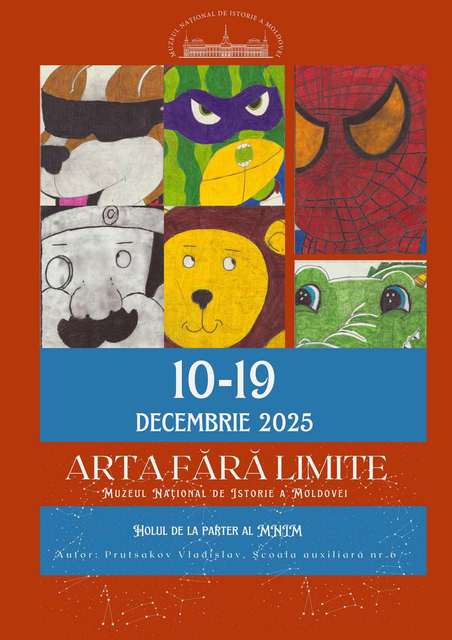  Events Archive Events Archive
Launch of the volume “Poles in Moldova. History and present”
December 14th, 2015
The book POLONEZII ÎN MOLDOVA. ISTORIE ŞI CONTEMPORANIETATE. CULEGERE DE STUDII ŞI DOCUMENTE " (Poles in Moldova. History and Contemporaneity. Collection of studies and documents) (Chișinău - Poznań - Warszawa, 2015, 368 p.) was released on Monday, December 14th, 2015 at the National Museum of History of Moldova.
Coordinators of volume: conf. dr. Lilia ZABOLOTNAIA (National Museum of History of Moldova, Academy of Sciences of Moldova); prof. dr. hab. Ilona CZAMAŃSKA (History Department of Adam Mickiewicz University from Poznań, President of Balkan Studies Committee of Academy of Sciences of Poland, chief editor of international journal „Balcanica Posnaniensia").
The event was attended by over 80 persons representing various institutions: Ministry of Culture, State University of Moldova, State Pedagogical University „Ion Creangă", Cultural Heritage Institute, History Institute, National Museum of History of Moldova, representatives of Polish community from Moldova (Polish organizations: Liga Polskich Kobiet, Polska Wiosna w Moldawii, Krakowianka etc.), writers, students etc.
At the event, moderated by dr. hab. prof. Eugen Sava, director of the National Museum of History of Moldova, several guests spoke: H.E. Artur Michalski, Ambassador of Poland in Moldova; dr. hab. prof. univ. Gheorghe Postică, deputy minister of culture of Moldova; dr. hab. prof. univ. Victor Ţvircun, academician-coordinator of Humanities and Arts Section of ASM; H.E. Anton Coșa, Roman-Catholic Bishop of Chișinău; H.E. Mátyás Szilágyi, Ambassador of Hungary in Moldova; dr. hab. prof. Anatol Petrencu, SUM; dr. conf. Ion Gumenîi, dean of History and Philosophy Department of SUM; Vera Petuhova, deputy director of Bureau of Inter-ethnic Relations; Valeria Martin, president of NGO ,,League of Polish Women".
The speakers mentioned the studies regarding the history of Poles in Moldova and secular Moldovan-Polish relations, remarkable people of Polish origin, activity of public organizations of Poles in Moldova etc. It was highlighted in particular the scientific value of the book released for national and international historiography.
Dr. Lilia Zabolotnaia mentioned this was the third book published with the financial support of the Embassy of Poland in Moldova. This volume is important because it was elaborated as part of a scientific project with the same title. For the first time, for project purpose was engaged an important scientific potential from academic and university environment from Moldova and Poland: Cultural Heritage Institute and History Institute of ASM, NMHM, SUM, Adam Mickiewicz University from Poznań, Katowice University and Krakow University, Institute of Slavic Studies of the Academy of Sciences of Poland etc.
 |
The collection is divided into 3 sections and 22 articles. The volume addresses problems of Polish community in Moldova's history, from Middle Ages to the present. The collection includes a wide range of studies covering different fields: medieval archaeology, numismatics, architecture, art, history, social and dynastic history, political and military history, spiritual life and history of personalities etc. The study is published in three languages: Romanian, Polish and Russian, each article having 4 abstracts.
The volume demonstrates clearly the importance of Poles in Moldovan history.
The publication is addressed to historians, politicians, diplomats, students and to all those interested in and passionate by history.
|
 31 August 1989 St., 121 A, MD 2012, Chisinau, Republic of Moldova
31 August 1989 St., 121 A, MD 2012, Chisinau, Republic of Moldova


















































